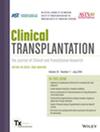Living donor kidney transplantation is the optimal treatment for end-stage kidney disease; however, few living donor candidates (LDCs) who begin evaluation actually donate. While some LDCs are deemed medically ineligible, others discontinue for potentially modifiable reasons.
At five transplant centers, we conducted a prospective cohort study measuring LDCs’ clinical and psychosocial characteristics, educational preparation, readiness to donate, and social determinants of health. We followed LDCs for 12 months after evaluation to determine whether they donated a kidney, opted to discontinue, had modifiable reasons for discontinuing, were medically ineligible, or had other recipient-related reasons for discontinuing.
Among 2184 LDCs, 18.6% donated, 38.2% opted to or had modifiable reasons for discontinuing, and 43.2% were deemed ineligible due to medical or recipient-related reasons. Multivariable analyses comparing successful LDCs with those who did not complete donation for modifiable reasons (N = 1241) found that LDCs who discussed donation with the recipient before evaluation (OR, 2.31; 95% CI, 1.54–3.46), had completed high school (OR, 2.01; 95% CI, 1.21–3.35), or were a “close relation” to their recipient (OR, 1.89; 95% CI, 1.33–2.69) were more likely to donate. Conversely, LDCs who reported religion as important (OR, 0.55; 95% CI, 0.38–0.80), were Non-White (OR, 0.70; 95% CI, 0.49–1.00), or had overall higher anxiety scores (OR, 0.92; 95% CI, 0.86–0.99) were less likely to donate.
With fewer than a fifth of LDCs donating, developing programs to provide greater emotional support and facilitate open discussions between LDCs and recipients earlier may increase living donation rates.


